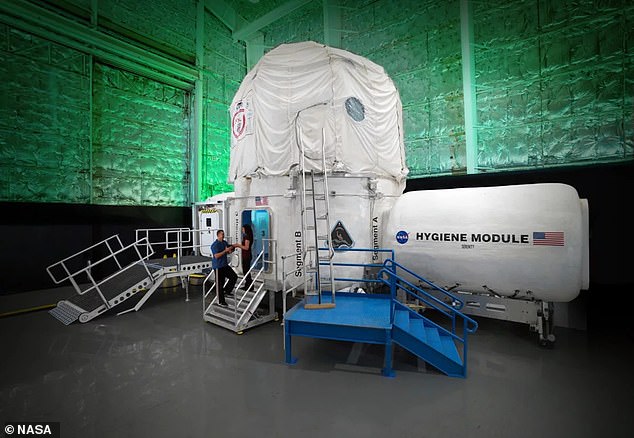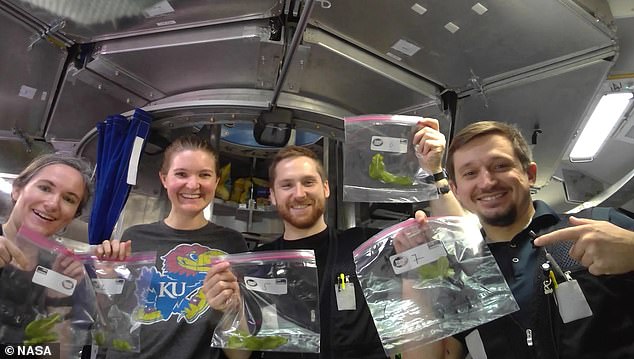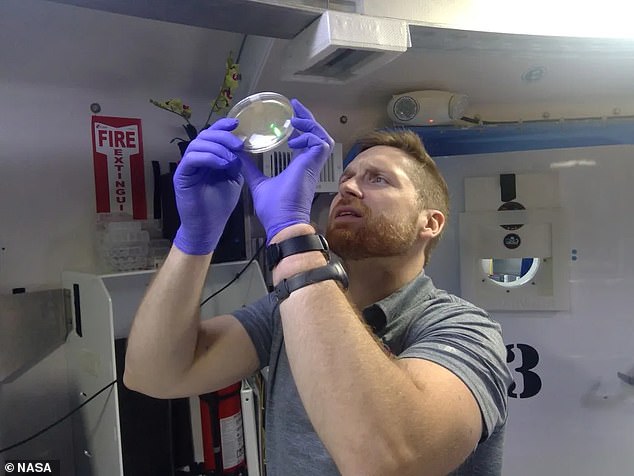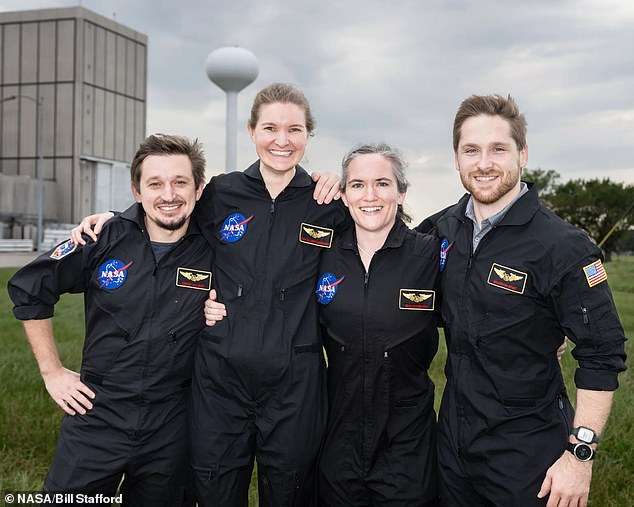Four volunteer scientists just emerged from a 45-day stay inside NASA’s most realistic Mars simulation yet.
The crew remained completely isolated inside the Human Exploration Research Analog (HERA), a 650-square-foot habitat at NASA’s Johnson Space Center in Houston, Texas, until Monday, when the hatch opened and they finally “returned to the Earth.”
While inside, they completed 18 different studies that will help NASA and other space agencies learn how humans respond to the confinement, demanding work-life conditions and remote environments of deep space missions, according to NASA.
NASA has set a goal of landing humans on Mars by the 2030s. With that deadline quickly approaching, simulated missions like HERA provide key information about how astronauts could survive the furthest manned space mission ever attempted.
The four-person crew, composed of Sergii Iakymov, Sarah Elizabeth McCandless, Erin Anderson and Brandon Kent (left to right), was the third to enter the HERA habitat.
The four-person crew, consisting of Erin Anderson, Sergii Iakymov, Sarah Elizabeth McCandless and Brandon Kent, was the third to enter the HERA habitat.
Their mission was unique because it included more detailed tasks designed to closely replicate the experience of living and working on Mars.
During the simulation that lasted a month and a half, the crew performed a wide range of tasks.
Their tasks included harvesting plants from a hydroponic garden, growing shrimp, deploying a small satellite, taking a virtual “walk” across the surface of Mars, and flying simulated drones over the Martian terrain.
“These activities are designed to immerse the crew in the task-focused astronaut mindset,” NASA wrote in a statement. statement.
NASA even simulated the communications delays that real astronauts on Mars might one day face. During an actual mission to Mars, communications from Earth could take up to 20 minutes to reach astronauts on the red planet, and vice versa.
Meanwhile, the crew was being monitored by NASA scientists to assess how their daily tasks, routine, and the isolation and confinement of their habitat affected their behavior and performance.
When they weren’t working hard, the team read books, played cards, built Legos, and listened to music.

The three crew members of the HERA mission entered the habitat on August 9.

Their mission was unique because it included more detailed tasks designed to closely replicate the experience of living and working on Mars, including growing hydroponic plants.

Volunteers also farmed shrimp, deployed a small satellite, took a virtual ‘walk’ across the surface of Mars, and flew simulated drones over Martian terrain.
On Monday afternoon, the crew finally emerged from their small habitat, marking the end of their mission.
“Following our safe passage to Mars and our safe return to Earth, as the crew of Campaign 7, Mission 3, we hereby officially transfer this exploration spacecraft to the flight analog operations team,” Kent said upon leaving HERA. .
“We hope that this ship will continue to serve as a safe home for future HERA crews,” he added.
NASA also operates another larger simulated Mars habitat called Crew Health and Performance Exploration Analog, or CHAPEA. These 1,700 square feet are large enough to house volunteers for up to a year.
The first group of CHAPEA volunteers left their habitat in July.
If you think you have what it takes to spend weeks inside a small simulation of Mars, NASA is actively seeking non-smoking volunteers between the ages of 30 and 55 for the upcoming HERA mission.

